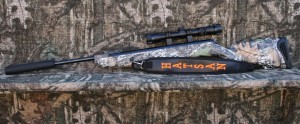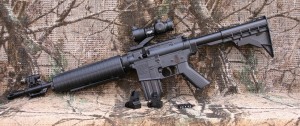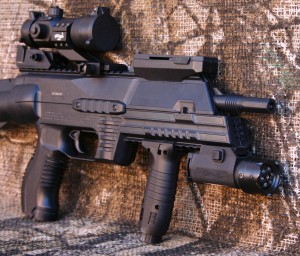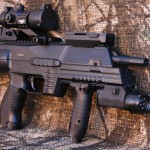There are many different types of airguns on the market. One of the first categorizations will be simply rifle versus pistol. As we start this blog I’m going to focus primarily on rifles at this time. We will, most certainly, get to airgun pistols down the road.
When I think of different types of airguns, the easiest categorization that comes to mind revolves around the power plant of the airgun. For example, you have spring powered airguns ( break barrel or fixed barrel ), single and multi-pump pneumatic powered airguns, CO2 powered airguns and finally PCP powered airguns.
Spring Power
Each power plant has pluses and minuses that will help you determine the best fit for your needs. Let’s start with spring powered airguns. These are actually broken up into a couple different categories as well. A spring is a mechanical device that stores energy. There are some airguns powered by a traditional coiled metal spring, and then there are some airguns that are powered by a gas “ram” or a gas spring. The mechanism that makes the gun work is essentially the same.
It’s actually pretty simple. You have a compression chamber, in which you have a piston and either your coiled metal spring, or your gas ram. When the gun is cocked the piston compresses the spring and is held in place by the trigger mechanism. When the trigger releases, the spring pushes the piston forward creating pressure that drives the pellet down the bore and out of your airgun. This type of mechanism is one of the least expensive while delivering a lot of energy. The downside to the system is the unique recoil that is generated by the spring. This unique recoil of a spring powered gun requires the shooter to have exceptional technique to see repeatable accuracy. So the upside to a spring gun is that they are generally inexpensive while generating a lot of energy. The downside is that the recoil requires a lot of practice if you want to have consistent accuracy.
Pump Pneumatic Power
The next group would be the single pump or multi-pump pneumatic airguns. These have been around a very long time. In fact I bet many of us are very familiar with the old wood Sheridan guns. These guns operate by pumping air into an air cylinder, building up sufficient pressure to fire the gun. When the trigger is pulled, a hammer spring pushes the hammer into the valve which releases the stored air and drives the pellet out of your airgun. The benefit of this type of airgun is that they are relatively inexpensive, have little to no recoil, and are pretty forgiving when it comes to consistent accuracy. The downside is that many require multiple pumps to have sufficient pressure to achieve any reasonable velocity. Also, the velocity achieved by most multi-pump or single pump pneumatics does not compare to what you can get from a single cock of a spring gun.
CO2 Power
The next class of airguns we will look at are CO2 powered airguns. CO2 as a propellant has been around for a very long time. With the creation of small transportable CO2 cartridges a whole class of airguns was born. Unlike a spring gun which has to be manually cocked and loaded each time, or a multi-pump pneumatic which has to be pumped several times, a CO2 powered airgun can be semiautomatic. A good example is the Crosman 1077. This is a very inexpensive yet extremely fun little airgun. It is a 12 shot semi automatic rifle powered by a single 12 g CO2 cartridge. The upside to CO2 powered airguns are that they can store enough CO2 for multiple shots without having to pump them up each time. They are also generally very accurate and easy to shoot because they have virtually no recoil. On the downside, CO2 is temperature sensitive. If it’s too cold the CO2 will not achieve enough pressure for the gun to fire effectively. Also, if you fire to quickly with a semi automatic airgun you can actually freeze the CO2 and cause it to be ineffective. On the other side of the equation if it’s too hot the CO2 can overpressure and create a situation called valve lock which prevents the gun from firing properly. CO2 guns typically do not generate the same power that you will get from a spring powered airgun.
PCP Power
The last class of airguns that we will look at today are PCP powered airguns. This class represents the highest level in airgunning. PCP airguns are powered by stored high pressure air, generally up to 3000 psi. These guns will have a built-in air reservoir that will allow them to shoot multiple times on a single charge of air. They generate little to no recoil and a tremendous amount of energy. PCP airguns will generally surpass all other airguns in accuracy and power. The upside to PCP airguns is that they can fire multiple times, are generally extremely accurate, and very easy to shoot. The downside, is that they require special equipment to charge them up to 3000 psi. They are also some of the most expensive airguns on the market.
Now that we have a basic introduction of the various types of airguns, we will look at some of the purposes and best uses of each class as we continue our series.




